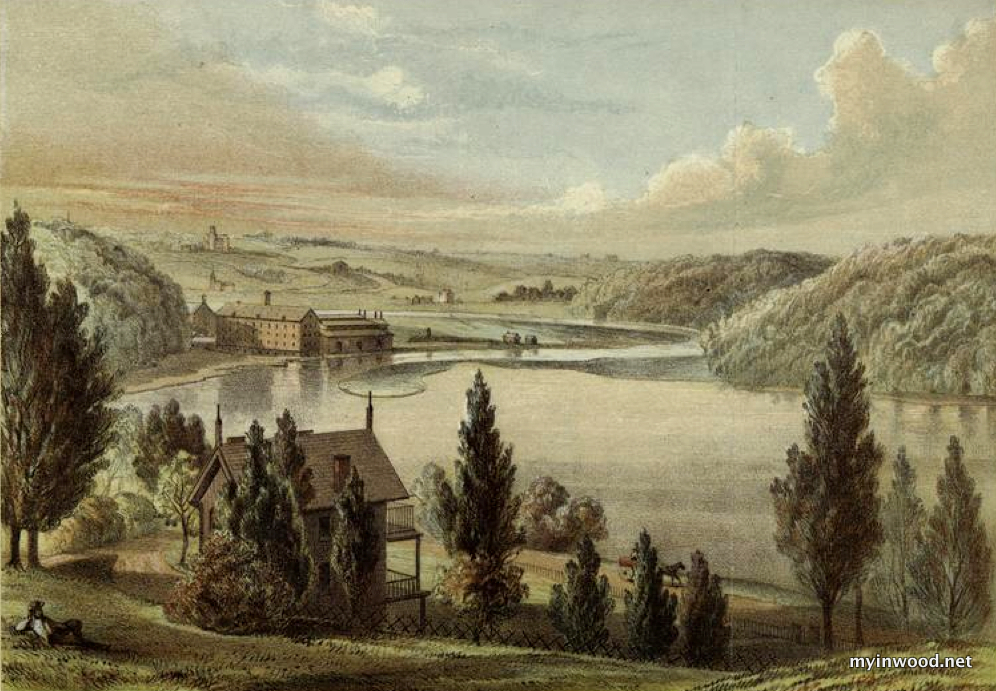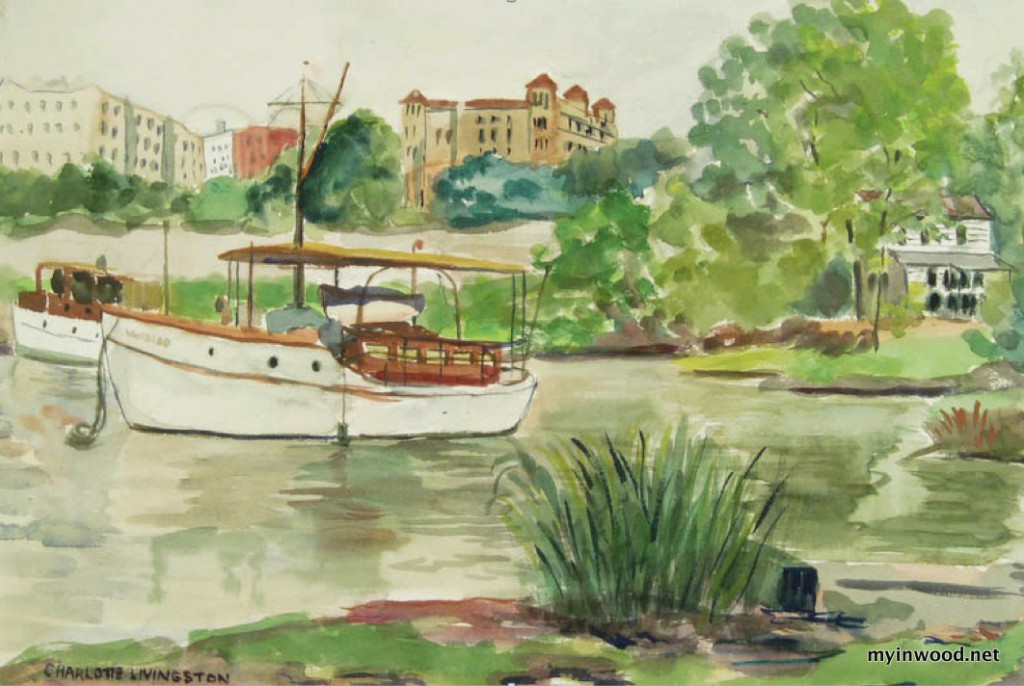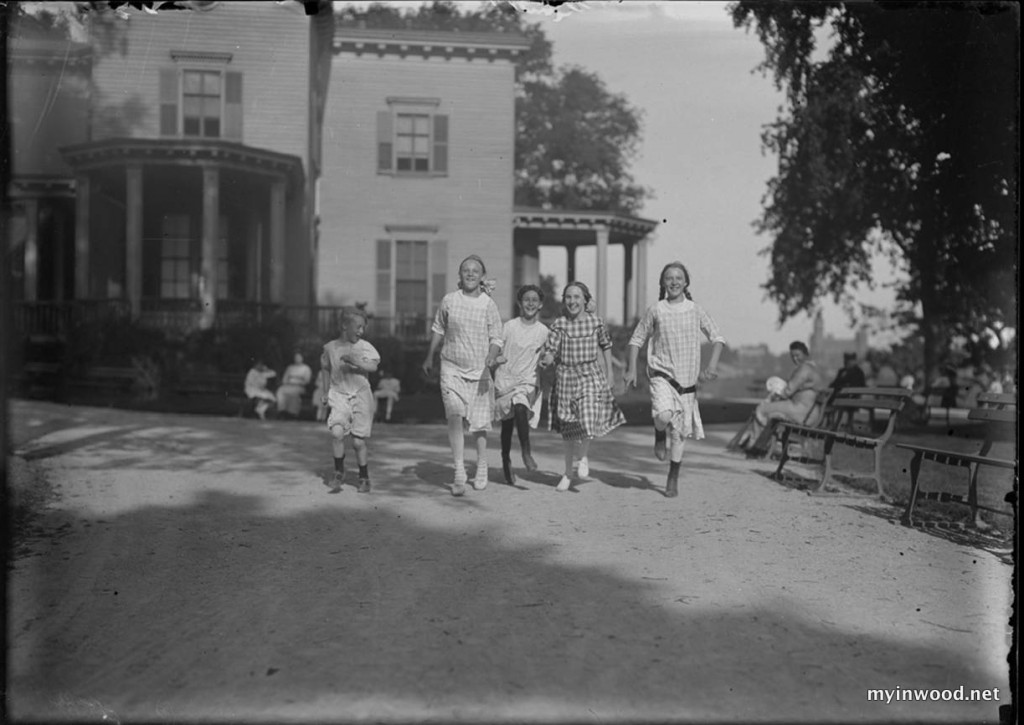For more than a century artists have visited Manhattan’s northern end to sketch, paint and photograph. Today artistic interpretations of Inwood Hill Park, the Spuyten Duyvil, the Harlem River, and the ever-popular Dyckman Farmhouse, grace the walls of museums throughout the world. Remarkably, in an ever-changing Manhattan, many of these spectacular views can still be seen today by those visiting the Inwood region.

Arnule Bandel sketch, Circa 1835, Collection of the Dyckman Farmhouse Museum. (This is the earliest known sketch of the Dyckman Farmhouse)
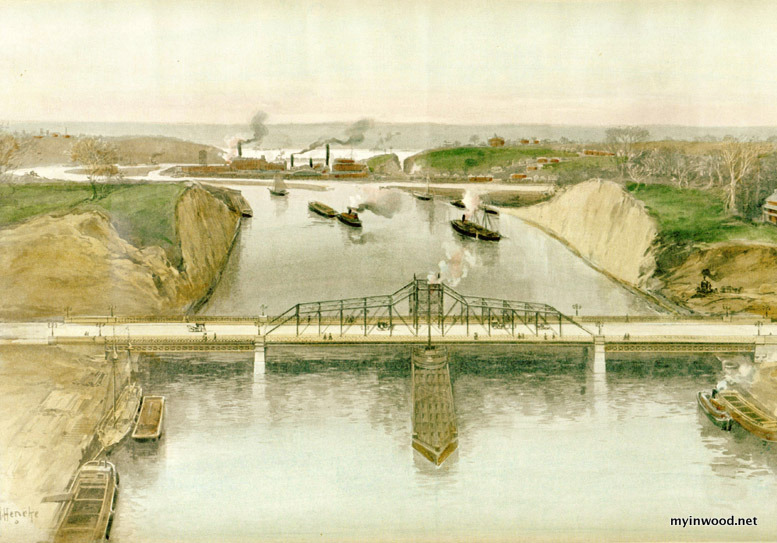
Harper’s Weekly Illustration by Al. Hencke, 1895 The New Ship Canal at Kingsbridge Connecting the Harlem and Hudson.
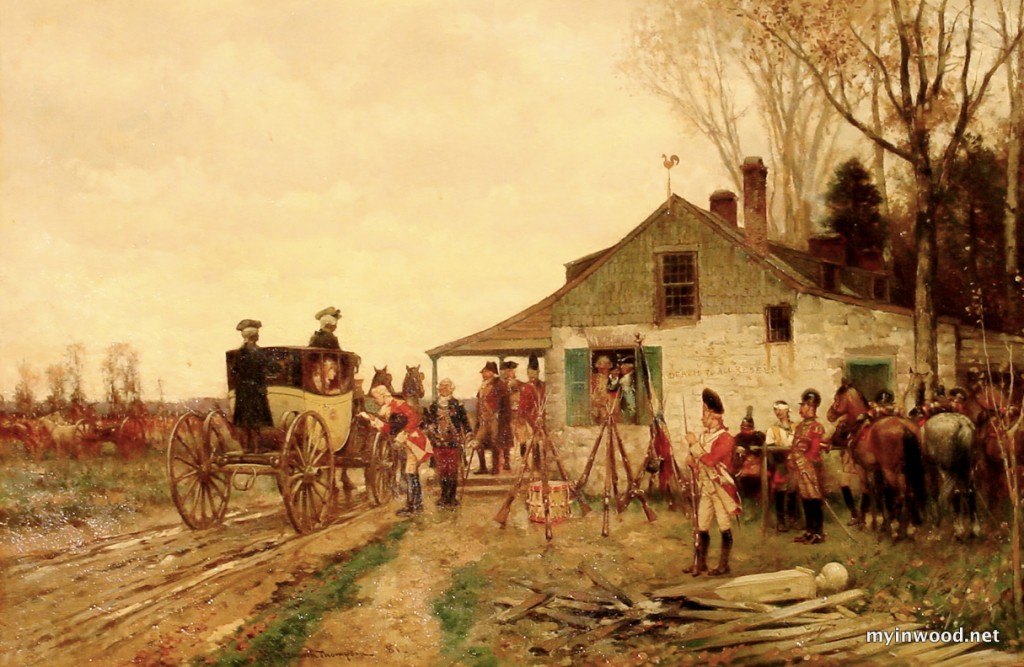
Alfred Wordsworth Thompson, Halt at the Outpost, 1881. (The building on the right is thought to have been inspired by the Dyckman Farmhouse.)
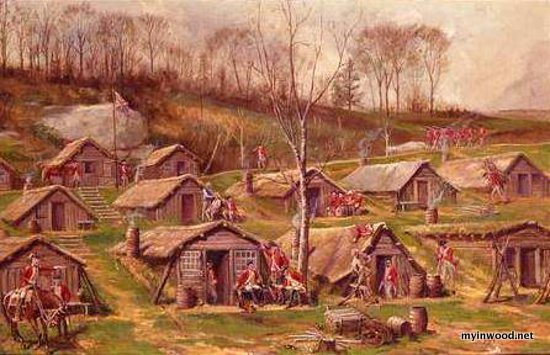
John Ward Dunsmore (1856 – 1945) Hut Camp of the 17th Regiment on Inwood Hill, NYC. (A restored Hessian Hut can today be visited on the grounds of the Dyckman Farmhouse)
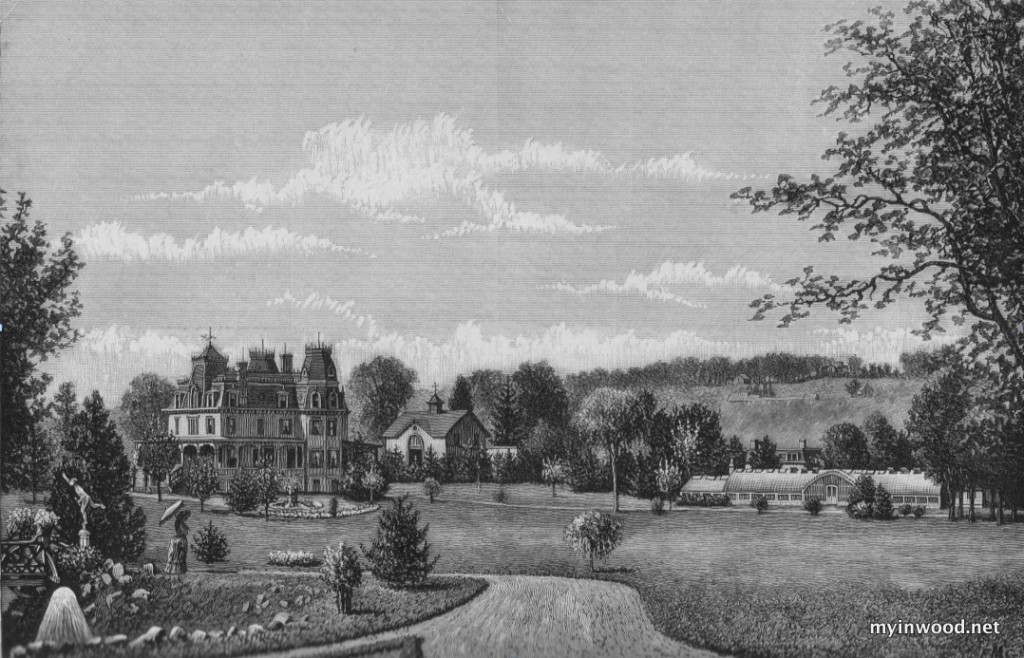
Residence of Isaac M. Dyckman, artist unknown, 1884. (This later Dyckman residence once sat on the land today occupied by Columbia University’s Christie Field House on West 218th Street)
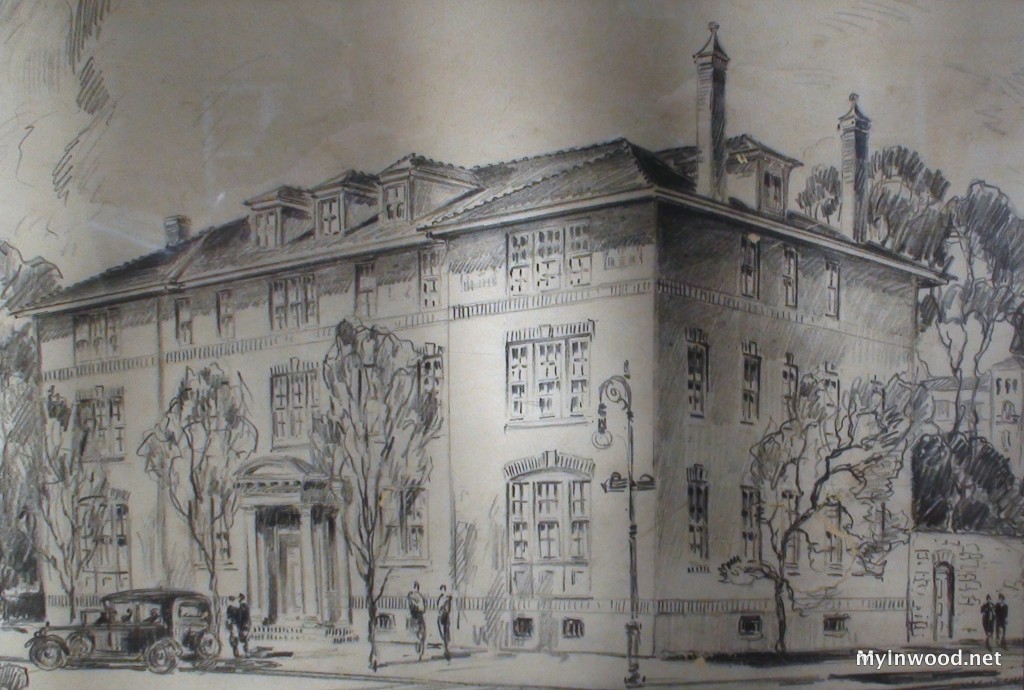
William H. Hurst House, artist unknown, 1920′s. (This once magnificent home survives, bricked up and neglected, on the corner of West 215th Street and Park Terrace East)
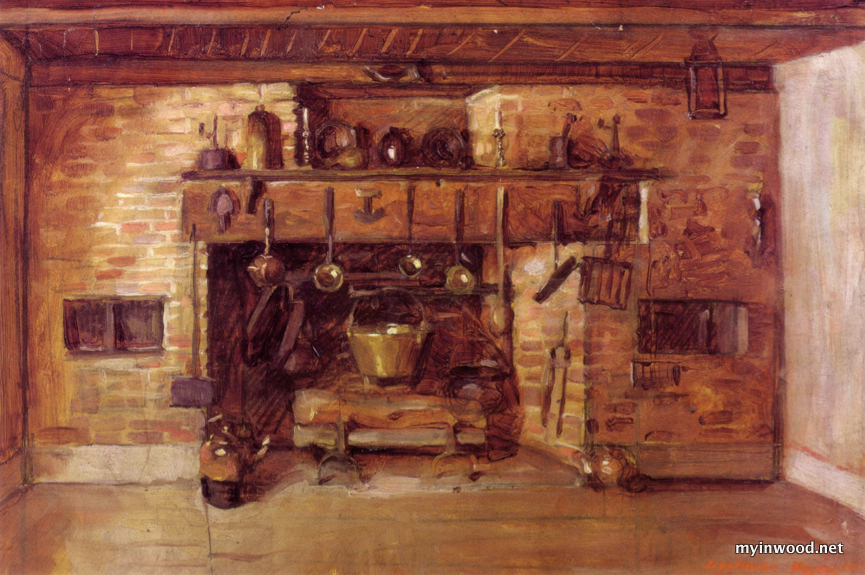
Dyckman House, Norman Rockwell, 1912. (This view of the Dyckman Farmhouse kitchen remains nearly the same more than a century later)
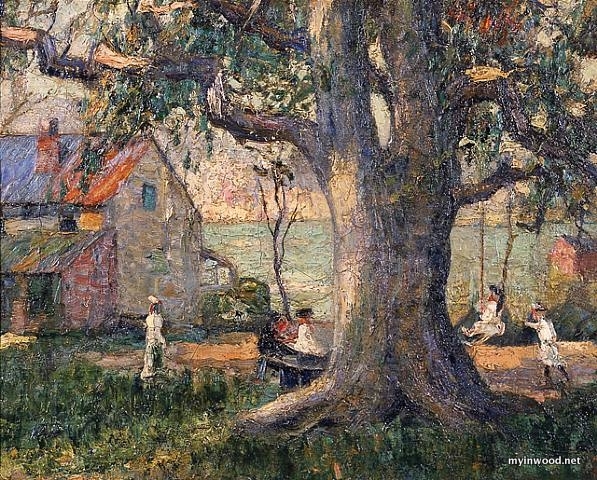
Summer Afternoon, circa 1908, Ernest Lawson. (The spot where this famed Inwood Tulip Tree once stood is now marked by a plaque on the Shorakkopoch Rock in Inwood Hill Park)
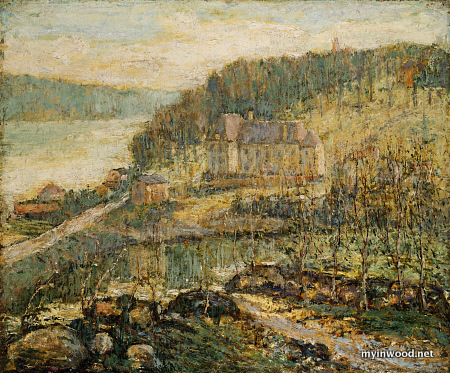
The Hudson At Inwood. Ernest Lawson (1873-1939). Oil On Canvas Laid Down On Panel. (Depiction of Tubby Hook where Dyckman Street meets the Hudson River. The old Magdalene asylum sits above the road)
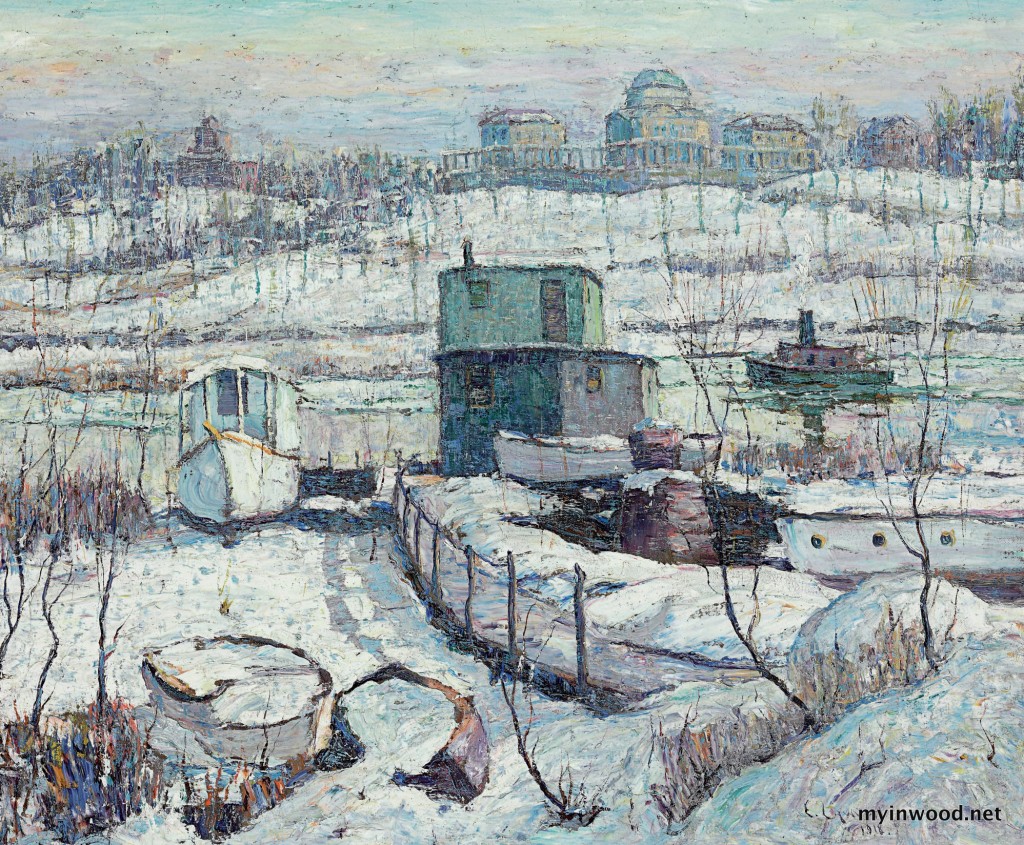
Boathouse in Winter on Harlem River, 1918 , Ernest Lawson. (View is east across the Harlem River. The Hall of Fame for Great Americans sits on the hill in the background)
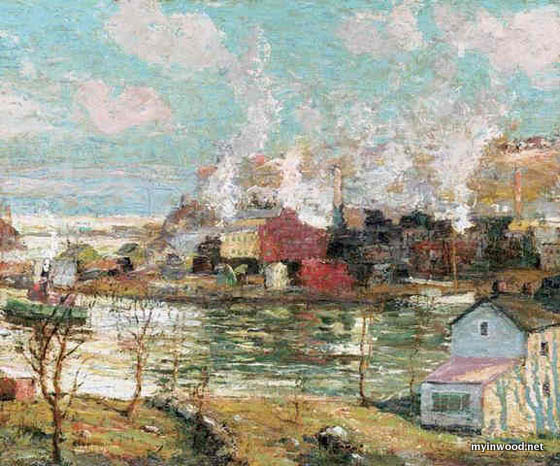
Spuyten Duyvil Creek, Ernest Lawson, 1914. (Depiction of the old Johnson Ironworks that once occupied the peninsula in Spuyten Duyvil Creek)
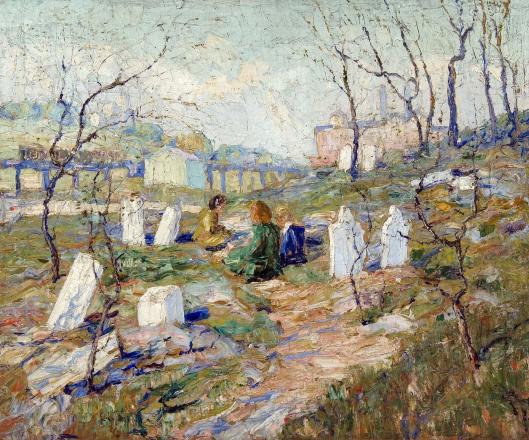
Ernest Lawson, “Graveyard,” circa 1912. (Barnes Collection, Philadelphia) (This ancient Inwood graveyard was once located east of Broadway near 212th Street)
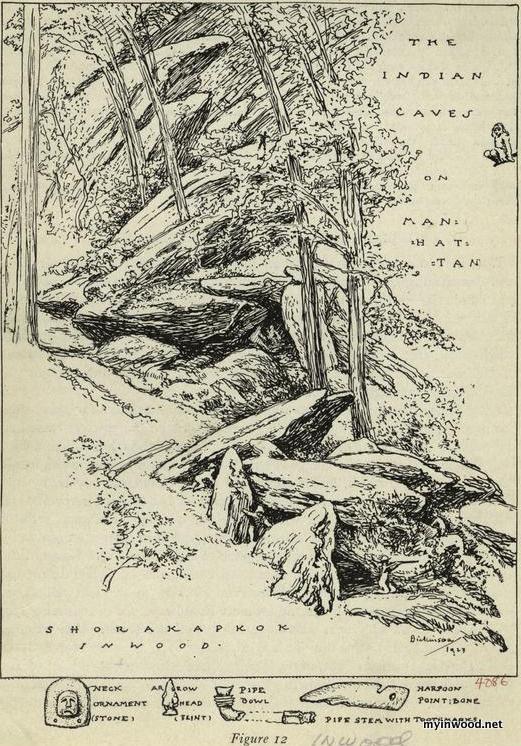
Robert L. Dickinson, Indian Caves on Manhattan, 1923. (These caves still draw visitors in Inwood Hill Park)
